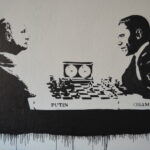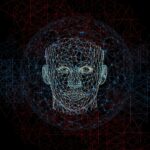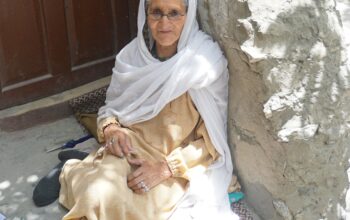These days it is easy to fall into a bad – or even a hopeless – mood. One just has to open a newspaper to be immediately reminded of the desperate state our world is in. Michail Schwanetzkij, a Russian satirist, famously coined the phrase “Crisis is our normal state”, and, unfortunately, he was not joking for once.
Trade wars, the Taliban in Afghanistan, a rise in populism, Covid-19 – to name a few – the worsening of the climate crisis lingering in the back… The world as our parents used to know it, is falling more and more apart at its seams. The postulation that each kid will once have a better life than their parents, a premise long uncontested, does not hold validity anymore these days.
But there is another promise, another vision of world order – pledging peace, prosperity and harmony – this time coming from the East. China has ambitious plans to restructure the world as we know it. Recently, the voices of Chinese politicians have become louder and adopted a more assertive tone, in propagating a promising new world, with China at its centre. Xi Jinping does not leave out any opportunities to proclaim the realization of the “China Dream”: “We must make persistent efforts, press ahead with indomitable will, continue to push forward the great cause of socialism with Chinese characteristics, and strive to achieve the Chinese dream of great rejuvenation of the Chinese nation.”
Xi’s ideas are often said to be associated with the book China Dream: Great Power Thinking and Strategic Posture in the Post-America Era in 2010 by Liu Mingfu, a retired Chinese colonel. In his best-selling book, Liu tells the story of how China will reassert its righteous place as the world’s dominant power and what life under Chinese hegemony would look like.
The “China Dream” and the possibility of a global Chinese hegemony could sooner turn into reality than one might think. China has been consistently and carefully rising among nations in the past thirty years. Starting in the 1990s, China began experiencing double-digit GDP growth. Even at its lowest GDP growth of 2,3% in 2020, the year of the Covid-19 related financial crisis, the Chinese economy is still expanding, making it one of the only G20 countries to not go into recession. By comparison, while the USA still has a higher GDP than China, its annual growth rate has been unstable and never exceeded one digit. The latest estimation is that the Chinese economy is on course to surpass the GDP of the US by 2028 or 2029.
Drawing on its economic advantage, China is developing and modernizing its military. By 2049, right on time for the 100th anniversary of the PRC, the People’s Liberation Army should be transformed into a “world-class” military.

All of these ambitious goals strive towards one thing only – the great rejuvenation of the Chinese nation. Among Chinese decision-makers, the Western discourse of “China’s rise” is a sensitive issue, because in their eyes, China is not “rising”. It is simply reasserting its rightful place as a major power, as it used to be centuries ago. This narrative is derived from China’s past, ancient texts and cultural virtues. Texts by philosophers like Confucius and Mencius introduce the possibility of a different model of leadership, that of ‘true kingship’ or ‘humane authority’, known as Tianxia. It is a form of leadership that does not rely on hard power, but rather on cultural attraction and “winning the hearts of the people”, as well as on voluntary submission. So when Chinese politicians and key strategists speak of the world’s and China’s future, they are often referring to this narrative reassuring that China’s rise will not threaten the stability of the existing international system and in fact, will actually lead to greater global stability. This is because China will behave very differently than the US, as it will mainly rely on political power that is rooted in virtues and personal morality of the leaders.
However, Chinese officials are often accused of “selectively remembering” Chinese history to serve their political objectives and that they purposefully reconstruct China as an overly benevolent center of East Asia. Adversaries, such as scholar Teufel-Dreyer claims that “supporters of the revival of tianxia as a model for today’s world are essentially misrepresenting the past to reconfigure the future, distorting it to advance a political agenda that is at best disingenuous and at worst dangerous”.
Leaving all of this aside however, if it came true, what would life under the Chinese Dream look like? Amongst the consequences of the rising China narrative is a view on ‘Otherness’ that advocates conversion rather than coexistence. The best way to understand the establishment of a harmonious world is with the Confucian idea of “cultivating the self, regulating the family, governing the state, and pacifying the world”. This means that a wang ruler (sage king) “brings peace to the world” by first “cultivating his own moral value”, then the moral values of those he rules over.

Another influential ancient philosopher, Mozi, presents an even more radical approach, based on his notion of universal love. Mozi notes that all people have different opinions; therefore, when individuals act purely out of self-interest and rulers act only in the interests of their own nation, conflict arises. The emperor, if benevolent, unifies the opinions of state leaders and through them all the people. Yet, this involves not just a radical reordering of people’s preferences but the construction of new identities, such that all become part of “one world, [with] one dream”. This process of “harmonizing the world”, requires hence the complete erasure of difference in the world. It requires the creation of new identities such that all belong to the new harmonious world order, leaving little room for those who may not wish to belong.
Related articles:
A Vision for the World with Chinese Characteristics
One Belt, One Road – China’s Path to the West
Photo credits:
“Xi Jinping at the EP” by European Parliament is licensed under CC BY-NC-ND 2.0
US National Archives & DVIDS – GetArchive | PH1 WINSTON C. PITMAN, USN, Credit: U.S Navy
“Confucius” by JayPLee is licensed under CC BY-NC-SA 2.0










